How Market Research before launching a product saves time and money
Not everybody wants or needs what you’re selling.

So, the initial question any marketer should ask themselves is: Who exactly will benefit from your product or service?

Some marketing teams might draw a gigantic circle around the entire world, launch the product and see what resonates with whom. It’s like throwing a big batch of goodies at the wall and hoping some of it sticks.
 But in the business world, that metaphorical miracle can be expensive and time-consuming, and at the end of the day, nobody consumes it.
But in the business world, that metaphorical miracle can be expensive and time-consuming, and at the end of the day, nobody consumes it.
The most important first step to launching any new brand, product or service is conducting market research.
Doing it the right way usually means an investment in time, money and resources. It can require a lot of planning and patience. It can mean asking difficult questions, listening to unfavorable feedback and having hard conversations.
What is ‘Copy Testing’
Definition: Copy-testing is a comprehensive approach used as part of marketing research to test the effectiveness of an advertisement based on responses prior to it being aired. This form of pre-testing will be beneficial for the company to understand whether an advertisement carries a strong-enough message.

Description: Marketing activities are expensive and copy-testing can help you make sure that your campaign is effective. Before an advertisement is launched or aired there are series of tests which are done to gauge the effectiveness of the campaign. These tests are carried on even after the campaign is launched to measure the effectiveness.
Both qualitative and quantitative techniques are used to measure the effectiveness of the advertising campaign. The approach saves the company time and money as the ad will be error-free and include all the desired changes.
The main purpose of copy-testing is to fix ads which may not connect with the audience. If consumers are not able to connect with the ad, they might get a wrong message.
To overcome this challenge, companies often enroll marketing research firms to conduct these studies. The advertisement is shown to a small group of people to measure their response.
By conducting this experiment, the responses can be quantified to give the company a more meaningful feedback. Here, analysts can analyse real-time response from the respondents after watching the advertisement.
The analysis could be done around various things such as how respondents felt after watching the ad, their facial expression. A wider survey, post the ad, can provide more information about how they felt and their feedback.
Often changes are made when an ad is shown in different demographics to connect with the audience of that particular area. Copy testing also evaluates ad on demographics.
1. Set The Market Research Goals
2. Identify The Target Audiences
Who will buy the product?
All marketing teams always makes sure to home in on primary target market (customers) while also doing secondary industry research.

Typically, there is more than one target audience and multiple segmentations, so it is important to identify them and build out personas for each. For B2B companies, the target audiences might be partners, providers, distributors, investors and so on. Sometimes companies make the mistake of interviewing only internal stakeholders or people in their own network in order to get insights, but I have found that this is not the most impactful strategy. The more you understand your intended audiences, the more effectively you can market to them.
3. Research The Competitors
Consumers always have options, so you will need to identify, and eventually respond to, anything that might complement, compete with or detract from your product. This means also conducting research on the entire product competitive landscape, which includes a strategic analysis on competitor market share, product strengths and weaknesses, indirect or secondary competitors, and price points. A good tactic is to build questions around audiences’ perceptions on competitor brands and products into your consumer research strategy.
4. Diversify The Data Sources
Utilize a 360-degree approach so that you can understand audiences, competitors and product value from all angles. At ATTOM, we use a combination of primary and secondary research in the form of quantitative data, analytics, industry trends, interviews, focus groups and customer surveys.
Customer and market research is so vital to understanding the capabilities of marketing and selling a product. It helps inform that go-to-market strategy and ensure you are most effectively delivering the right product to the right customer at the right time.
On Field Consumer Response
Innova reports include a viewpoint on the broader macro trends shaping markets globally, drawing on trusted public data sources, expert opinions and proprietary consumer research supplemented with cutting edge examples of how governments, companies and brands are responding.
Our consumer reports draw on insight from our annual program of consumer surveys which examine changing lifestyles, attitudes and purchasing behavior across food and beverage and personal care broadly as well as in relation to specific categories providing both breadth and depth of consumer understanding.
Find out who is buying into a category, what the purchasing drivers and barriers are, the key consumption occasions and where people are purchasing. Get an overview of category sizes, company shares and NPD trends, a solid picture of the key trends shaping your category at your fingertips.
Our expert analysts keep you up to date on the current topics shaping the marketplace like personalized nutrition, plant based eating and omnichannel eating.
Get deeper understanding of key trends and innovations in critical areas like sugar and sweeteners, plant proteins and flavors. Our experts highlight the latest NPD trends, new and emerging ingredients and provide a view on what’s next and how to tap into current trends.
Our series of packaging reports keep you up to date on the key drivers of innovation like sustainability and transparency as well as the latest developments, technologies and innovations shaping the future of packaging for the food and beverage industry.
1. Create Better Products
So you think your new product is a hit – but are you sure? Before launching a new product or service is one of the best times to use market research. Because the simple truth is, better products sell more.
You can use market research to test new ideas, products, or features to see how customers react. You can test for safety or even find out how much a customer would pay for a particular product or service. If you’re a service-based business, research can help to improve your service and tailor it to your ideal customer.
If your product isn’t gaining traction, figure out why and redirect. If your product is already successful, figure out how to make it even better and sell more.
“Targeted research improves your decision-making capabilities and reduces your risk.”
2. Market Smarter (and More Effectively)
Market research takes the guesswork out of marketing. Gain a clear picture of who your customers are, what they love and don’t love, and where they hang out.
When you give customers exactly what they want and have the right messaging, you’ll not only increase conversions, but you’ll build brand love and customer loyalty. Repeat customers cost less to acquire and they spend 67% more on average than new customers, by the way.
A customized research project can answer your specific questions and help you ask the ones you hadn’t even thought of.
3. Understand Your Competition
Understanding the competition is the only way to beat them. Use competitive intelligence to make your own products, services, and branding stand out. Not only can you learn how to price your product competitively, you can also learn how to do things better than others in your industry.
Find out what others in your category are doing to pull customers away from you – or better yet, find out where they are falling short and then fill that hole.
4. Stay Current
These days, life moves pretty fast. What was hot a few years ago or even a few months ago may be a failure today. To increase the chances of success, a business must anticipate and react to the ever-changing worlds of business and marketing.
Through the use of surveys, studies or focus groups you can use to stay aware of your customers’ evolving needs, market trends, and more.
5. Identify New Opportunities and Grow Smarter
If your business or product isn’t gaining traction right away, don’t give up! Consider using market research to identify new opportunities or avenues you may have missed. Whether you need to rebrand, rename, or redesign your product, a detailed research report can help you determine where to go next.
If your business is successful, but you’re not sure of the smartest way to grow, research can help. Evidence can help identify lucrative opportunities you may not have considered. Data helps you determine your best income streams and most successful initiatives, so you can focus your energy on what brings results, instead of chasing your tail.
Learn the difference between market research and marketing research

When it comes to running a business, making assumptions about your customers, market, competitors, or systems can cause you to waste time, money, and effort.
To make effective decisions that will grow your business and use your resources wisely, you will need to put some of those resources toward conducting market and marketing research.
Market Research vs. Marketing Research
Market research involves identifying a specific “target,” and focusing exclusively on that group. It is research into a narrow group of consumers to understand their behavior and motivation.
Marketing research has a broader scope that market research. It is used to examine the entire marketing process of a company, rather than only looking at the consumers that the company is targeting.

The Importance of Market Research
Successfully running and growing your business depends on understanding your target customers. Once you have a clear picture of their goals, needs, and values, you are more able to drive them towards purchasing your products or services.
Market research is one of the best tools you have for understanding your customers. It gives you hard data that you can use to drive your marketing strategy, making both marketing and selling easier and more effective.
Market research helps you:
- Improve communication. It drives your communication not only with your current customer base but with target prospects as well. Market research shows you where your customers can be reached, as well as what language will be most effective in attracting their attention and resonating with them on an emotional level.
- Identify opportunity. Market research helps you identify both high-level and more accessible opportunities for reaching and converting new customers. It can be the best way to discover new platforms for advertising, consumer concerns you were unaware of, and gaps within your market that you can fill.
- Lower your risk. Concrete data keeps you focused on the real opportunities and helps you avoid unproductive effort. When you understand your customers, you can use your resources to reach them more effectively, with less risk of wasting time, money, and effort on marketing initiatives that don’t work. Market research also helps you identify low-risk, high-reward areas where your company can expand or offer new services,

More Importance of Marketing Research
Marketing research is important for evaluating what is and is not working in your business model. It includes research into your target market, as well as the systems in your business that make up your marketing conditions.
Marketing research looks at every aspect of the Four Ps of marketing: product, price, place, and promotion. This includes:
- Public Relations
- Modes of distribution
- Development of new products/services
- Promotions and advertising
- Pricing
- Market conditions
- Branding
Marketing research helps you learn not just what your customers want, but how successful your business is at reaching and connecting with them. It helps you identify problems and opportunities, refine your systems, and evaluate your marketing strategy.
How to Conduct Research for Your Business
Though they look at different aspects of your business, both market research and marketing research should follow the same pattern of data collection and analysis.

- Define the problem. Start by identifying the focus of your research. Knowing what question you are trying to answer will help you structure your research effectively.

2.Determine your budget and timeframe. How much can you afford to spend on the research process? How soon will you need to have data collection completed? Like all the strategies that you use to grow your business, research should be conducted within your available resources. However, depending on the urgency of the questions you are answering, it may be worth spending more money to get the most comprehensive results possible.
- Design your method and needs. Identify what data needs to be collected and how you will gather it. Some options are observation, surveys, telephone calls, or focus groups. If you are unsure how to structure your data collection, consider working with a professional research firm.

3.Choose a sampling method. How will you select the participants for your research? You may need a random sampling from the general population of consumers, a group that all have a single lifestyle factor in common, or responses only from people who are already your customers. Create a plan for identifying and contacting your participants.

- Plan for data analysis. Decide how you will analyze your data. Will you need quantitative data for statistical analysis or qualitative, observational data to give you a broad picture? Will you use software or do it by hand? Take time to learn about various methods of analysis to find the one that will best answer your research question.
- Data collection. Once you know what question you want to answer and have designed a research method to answer it within the constraints of your available budget and time, it’s time to collect data. Many businesses work with professional firms or consultants to conduct their actual research.
- Analysis of the data. No matter how straightforward your data seems at first glance, you’ll want to use specific methods of analysis to ensure that you understand what it is telling you.The methods of analysis that you use will depend on the type of data you collected. This should also be when you check for errors, which can occur in your sampling method, data collection, and analysis.
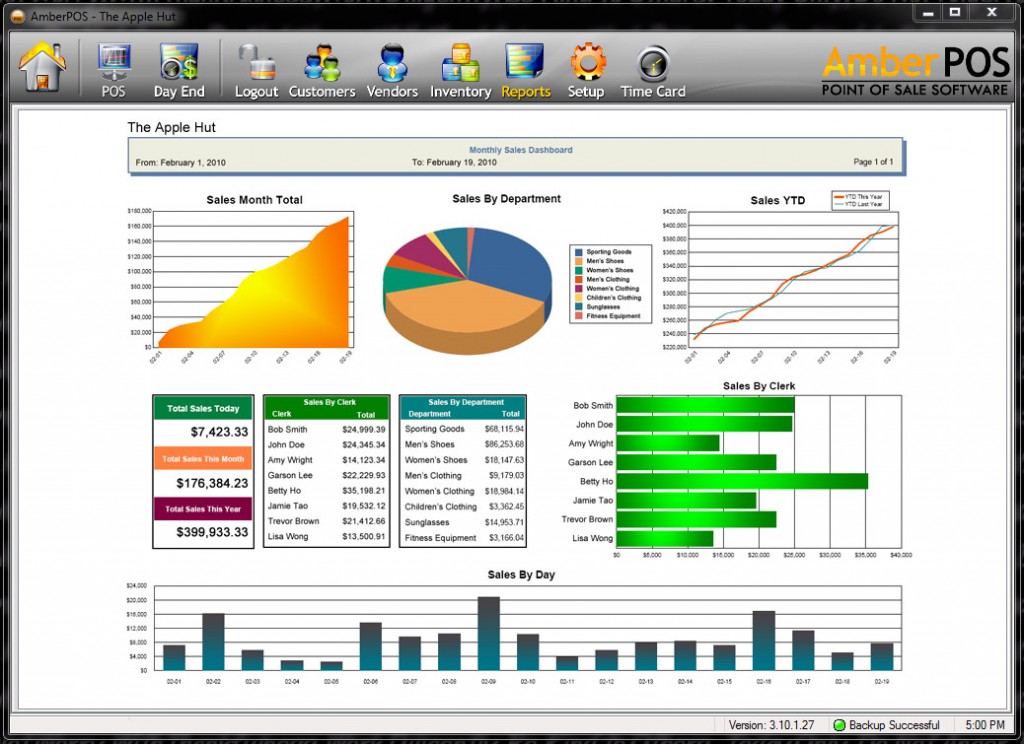
4.Create your report. The final step of the research process is drafting a report on your findings. Your report should outline the entire research process, from developing your problem statement to the results of your data analysis.
No matter what type of research you are conducting, you will need to follow the full research method to arrive at a conclusion that will benefit your business. If your findings lead to a solution to your problem statement, you will be able to decide on the next steps for your business.

Choose the right product price place time
“Creating a product launch roadmap will make it easier to identify your goals, set out your strategy, and designate tasks to different teams and members. It sounds like this one document has a lot to cover, but with a designer or just a good roadmap maker, you can design a product roadmap that will help you implement your launch strategy and get members aligned around a single source of truth.
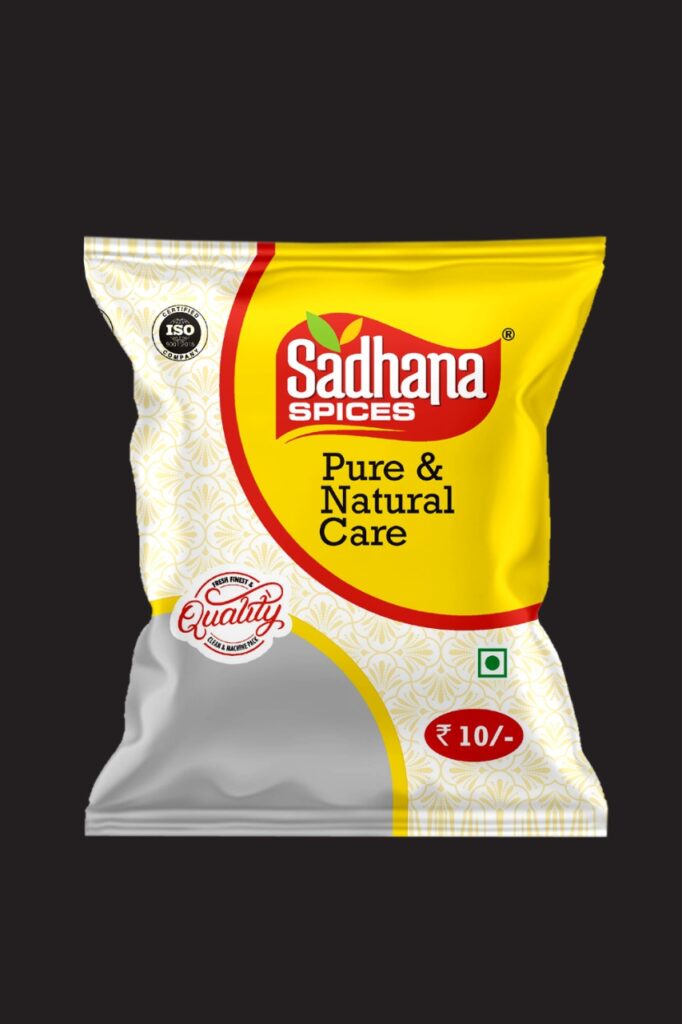
Elements of a Successful Product Launch
Aside from the hustle and bustle of making sure that their product functions accordingly and attracts the right niche, businesses should also focus on the external factors that can support their product launching. Keep in mind that the crucial part of a product launch is letting people know that you have something new and exciting for them to try out.
The three essential elements of a a product launch:

- Pre-Launch Buzz- Maximize the technology accessible to your business and create relevant online posts, ads, and promotions that can engage your customers and prospects on various social media platforms. Other ways to spark customer interest are through product sneak peeks, pre-launch product testing, and getting relevant brand ambassadors to help with your campaign.

- Comprehensive Media Planning- Your plan should focus on your product’s most compelling features and the reason why people should consider trying your brand out- competitive pricing, unique features, creative packaging, accessible. The company’s media planning can include promotional strategies such as- television and radio commercials, newspaper and magazine advertisements, and live product demos.
![]()
- Social Media Outreach- According to research, a product that is partnered with a social media marketing campaign has the greater advantage of generating a greater amount of sales and conversions. The best thing about establishing your social media outreach along with your product is that people recognizes you and your brand almost immediately even before your official product launching. Their satisfaction can lead to positive reviews, recommendations, and closed deals.

Importance of Timing a New Product Launch
Launching a product is often a make-or-break moment for a company. Effective timing is critical to attracting customers. It optimizes revenue and profit on a new product is the importance of timing for a new product launch:

- Customer Preferences: You want to launch your product at the perfect point. When the market is most anxious for the features and benefits offered by your product or service based on customer preferences. It will attract the most sales and generate the most revenue.

- Competitor Launches: Your competitor’s launch also affects the timing of your launch. First-movers try to beat the market and attract eager buyers. Other companies prefer being a second-mover. They wait until the market becomes familiar with a product’s features. Then, they launch when demand begins to grow.

- Quality: The timing of your launch may also affect the quality of the product at offering. The life cycle is often short for companies who rushed production and quality suffered. A pilot rollout is often a good first step. It’s a way to get real customer feedback on the first batch of product and adjust the next wave before it hits customers or retailers.

- The Marketing Process: The product’s launch needs to be in sync with marketing activities. Use advertising and other promotional techniques to introduce the product’s benefits to targeted customers. Establishing a product launch date and building toward that, and then launching on-time is important. Missing a marketed product launch date can alienate potential customers.

How to Determine the Right Timing
When is the right time to launch a new product or service? There’s no scientific process for determining the best time.

The Readiness of the Product
In general, the best time to launch is as soon as your product is ready. Release a product as soon as it’s working. It has to perform the stated function, and that’s all. Do all the honing and perfecting when it’s already in the market. You can start profiting from your product before you start tweaking it. Take advantage of customer excitement. Then sell the refined versions later.
That’s not to say you should release something inferior to the public, of course. It describes a different way of looking at product development. Product development should be a never-ending process. It’s a lifelong struggle for perfection that’s never actually achieved. Knowing that, why not make money as soon as the product is viable? If Apple waited until the first iPhone could do what the latest ones can, we’d still be flipping open our Motorolas.

Sales Cycles
The exact time of the year, month, or even week you choose can make a difference. Ask yourself these questions:
- Is there a particular time when your target audience will want to use that product?
- When would they enjoy your product most?
Research proves that Tuesday is the best day for launching a product. On Mondays, consumers are too focused on the coming week. While on Fridays, people look forward to the weekend. On Tuesdays, you can be sure that people have already dealt with issues from the previous week. It also gives you enough time – a total of three days – to spread your message and follow-up on questions.
A seasonal product will itself determine the best time of the year to launch. Self-improvement products can work well in January to help fulfill New Year’s resolutions. While outdoor products are best for spring and summer.
The time of the year matters as well. It doesn’t make sense to reveal your product before a major holiday. People tend to travel back home and have no time to read when surrounded by family and friends.
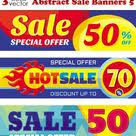
Your Schedule
Your ideal launch time will also depend on your own schedule. Schedule the launch when you have as little going on as possible. so that you can devote the needed time and energy for the launch. It makes sense to focus on product launches over other considerations. You only get one shot at a successful launch! Expect glitches, customer service issues, and other unpredictable demands on your attention. It’s important to have all hands on deck, and yourself at the helm, ready to execute the launch with 100% presence.
Launch Conditions
There are conditions you need to meet to have a successful product launch.
- First, establish your brand’s credibility to justify excitement for your new product. If you haven’t already given your consumer base a reason to trust you, it’s time to lay that groundwork down. More customers will be willing to gamble on the certainty that a product will meet their needs.
- Make sure that you prepare your business infrastructure for the spike in sales. Is your distribution system in place? Is your payment system glitch-free? Do you have team members standing by for customer service and tech support? Expect success, and you’ll guarantee it.
- Finally, time the launch in relation to existing products and their performance. The best time to launch a new product is when another product of yours is reaching the peak of its success. You can ride that momentum into the next wave of sales.
Marketing and Communication
The best way to ensure that your launch goes well is to have a unique and creative product in the first place. Beyond that, it’s a matter of marketing and communication. Stay in touch with your audience. Use email and social media to build excitement around your product, and be there to usher it into the market. Expect the unexpected. Be ready to handle questions, concerns, and other feedback from your audience. Stand by your product but look for ways to incorporate feedback quickly. You’ll need to know what went well, and what didn’t. The day of your big launch is the day you start preparing for the next one.

Launching a product can be stressful but also highly rewarding. There’s no guarantee things will go as planned and it’s wise to “expect the unexpected.” But there are things you can do to increase your odds of success:

1. Ask If You Should You Be First
While being first to market can have many advantages, it often comes with a whole host of problems. There are frequently unanticipated problems – from legal challenges to supply chain issues. Being second, particularly for problematic initial launches, can be a huge advantage if you can learn from the challenges your predecessor faced. You have the opportunity to address those initial launch issues and bask in the glow of a more successful product launch. You don’t have to do it first if you do it best!

2. Make Sure You’re Ready
If you want to make the most of market opportunities when they present themselves, then you must be ready. When there’s demand in the marketplace, you have to ask for the sale and be ready to deliver. When the market is primed for your exciting new offering, you have to have it in the pipeline. It take foresight to read the tealeaves of marketplace but to gain real competitive advantage, you must be ready for action at any moment.
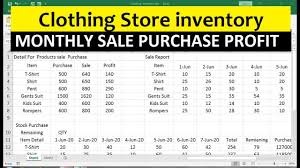
3. Do the Research
Take the time to investigate whether consumers really want what you’re offering and there’s product-market fit. Learn who your customers are and what matters to them. Make sure their needs are built into your offering and they can see and understand the value proposition. If your “plan” is to throw a whole bunch of stuff against a wall and see what sticks, then it’s not much of a plan. You risk losing money, losing customers, and hurting your entire brand. Proper preparation can save you valuable time and money. It’s not a step to skip!

4. Get the Word Out
Build up anticipation and buzz around your new offering. Whether you’re adding to services you already provide or launching a new product, getting your new customers excited is critical to early success. When it comes to marketing, your goal should be to reach as many ideal customers as possible. Get them excited and intrigued by communicating how your offering will solve a problem.

5. Don’t Be Blinded By What You’ve Built
It can be easy to lose your perspective when you’ve poured so much energy into building a new product or service. It’s your baby! Make sure you keep your focus on business fundamentals. The goal is to make a profit, not to see your creation in the wild. Many great products and ideas failed to be successful because they weren’t profitable. Sometimes, new products are unprofitable initially but as they gain traction, become profitable. If that’s the case with your offering, make sure you understand how much runway you’ve got and if things aren’t going as planned, when you need to abort or regroup. More than a few businesses have gone belly up because of the stubborn refusal to admit their product wasn’t profitable. Make sure you understand your metrics and what it will take to turn a profit.

Why Do Market Research for New Product Development?
Market research for your new product development strategy helps you minimise risks and prepares you for a successful product launch. You get to know your market and audience in a way that helps you create not just the perfect product concept, but also the right messaging and marketing around it—something that will actually resonate with your audience.
Market research is used to base your decisions on facts, not just ideas and hunches – however good you might be at guessing games. Before spending time and money on a product idea, you get a good idea of how likely it is to be a success. This will also help you plan how much time and money you’ll actually need.
Investors and stakeholders will also want to see market research if you want to launch a new idea: they want some kind of security that the product will actually sell. Even though market research isn’t a crystal ball and doesn’t exactly predict the future, when it’s done right it can definitely give you a clear picture of how your product concept will be welcomed into the market.
1) Market Research Centers Business on the Customer
2) It Helps Understand Your Competition
3) It Enables You to Test for Success
4) It Ensures Your Relevancy
5) It Grows Your Business
All small business owners want to grow their company—but many are unsure where to begin. Research is your best tool for any type of product development, launch, or business expansion. Solid metrics can help:
- Keep track of trends and future markets
- Identify areas for expansion
- Draft effective strategies for campaigns
- Set realistic targets for business
- Beat competition
- Optimize results
By anticipating the evolving nature of the market, effective research enables business expansion and growth.
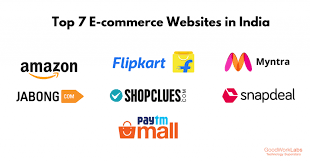
Top most festival Products FMCG consumers search today
World Wide Festive Trends Decoded What Indian festive consumers seek...
Read MoreHow right selection of FMCG Salesmen improves brand market share
How can FMCG Companies improve salesman’s technique in order to...
Read MoreHow most searched Fmcg sales and marketing words help newbie salesman
Why undestand FMCG sales management? Sales management is the process...
Read MoreHow Successful FMCG Salesman Starts his Day, a guide
How does one become a good sales executive in the...
Read More


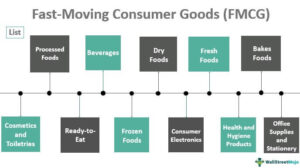





Pingback: How Top Flavour Fragrance magical Tastes from Indian Chef’s captivated the world - DigitalGumma
Woah! I’m really digging the template/theme of this blog. It’s simple, yet effective. A lot of times it’s very hard to get that “perfect balance” between superb usability and visual appeal. I must say you’ve done a excellent job with this. Additionally, the blog loads super quick for me on Internet explorer. Outstanding Blog!
Hello! Thank you for your kind words.